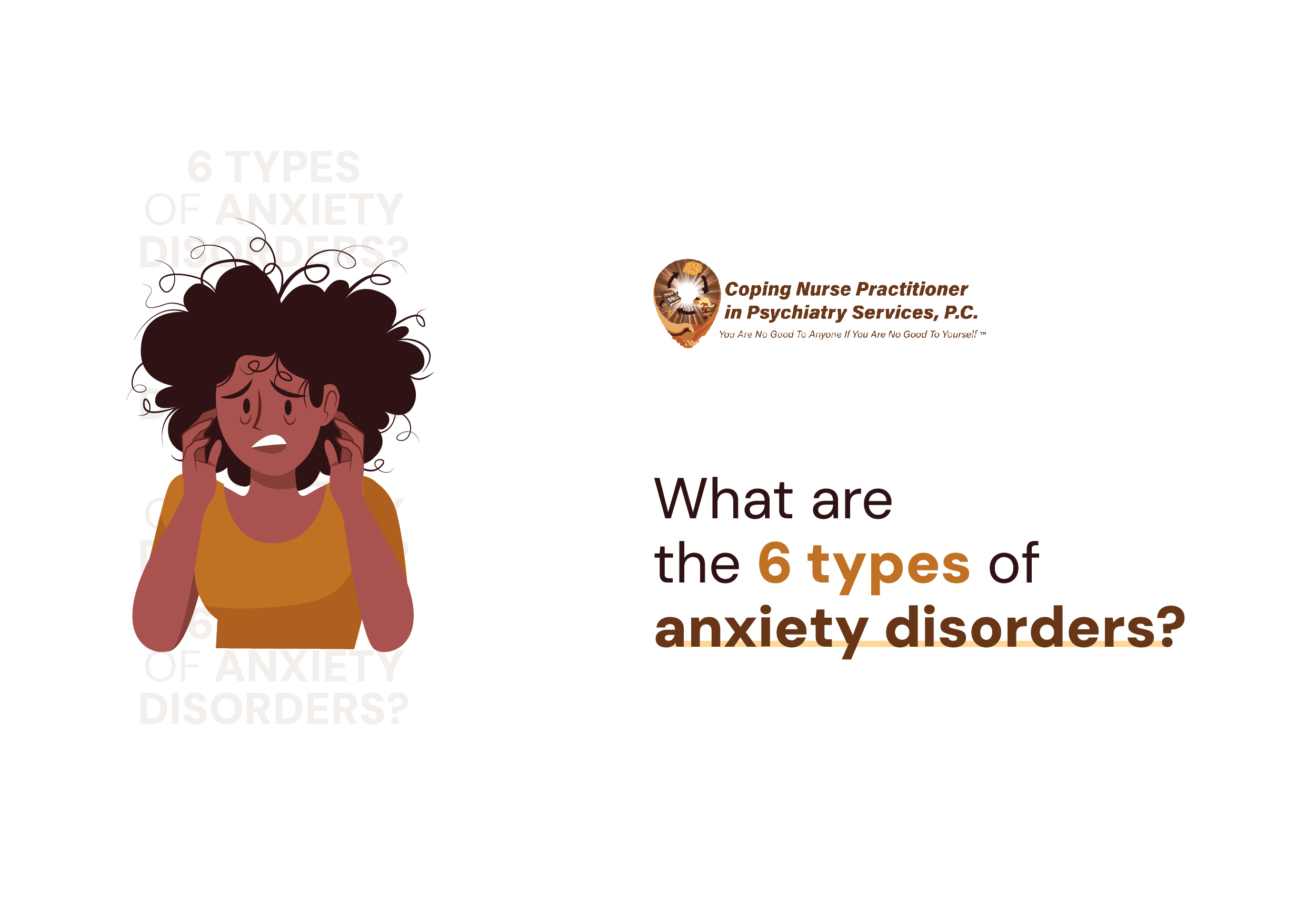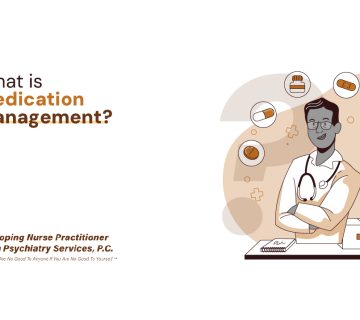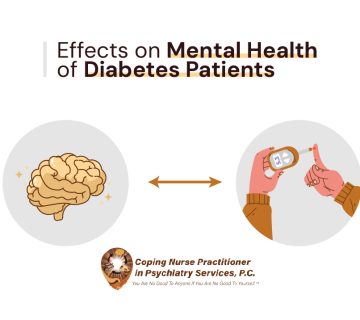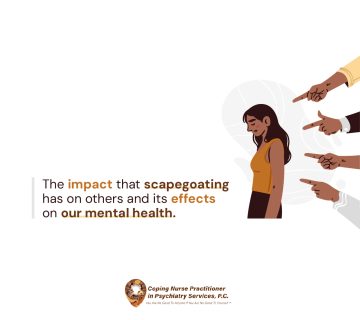Anxiety disorders have many symptoms and experiences that can be highly debilitating. Just as no two people are alike, no two anxiety disorders appear quite the same way.
By unpacking the distinctive features of each, we achieve a deeper understanding of the spectrum of anxiety-related conditions.
If you’re someone who grapples with anxiety daily or you’re looking to support a loved one, understanding the subcategories of anxiety disorders is essential.
Our post will talk about the six major types of anxiety disorders, and will highlight what distinguishes each one and how to manage them.
6 Main Types of Anxiety Disorders
1. Generalized Anxiety Disorder (GAD)
Generalized Anxiety Disorder is the chronic and often uncontrollable worry about everyday life even when there is little to no reason for concern.
People with GAD expect disaster and are likely to be overly concerned about money, health, family, work, or other issues.
This worry is often unrealistic or out of proportion and can be quite intense.
Symptoms
GAD is often associated with:
- Persistent excessive worry.
- Ongoing restlessness.
- Difficulty concentrating.
Physical symptoms can appear as:
- Muscle tension.
- Gastrointestinal discomfort.
- Sleep disturbances.
Triggers
Triggers for GAD include:
- Stress in one’s personal life.
- Work environment.
- Family life.
- Traumatic events.
- Changes in life circumstances.
Treatments
Cognitive-behavioral therapy (CBT) has proven useful in treating GAD as it allows people to recognize and reframe their patterns of worry.
Medications like selective serotonin reuptake inhibitors (SSRIs), can also be prescribed to manage symptoms.
2. Panic Disorder
Panic Disorder is defined by recurring unexpected panic attacks, which are sudden periods of intense fear that could include palpitations, shortness of breath, sweating and a feeling of imminent doom or death.
Panic attacks can happen without warning and the fear is so intense that it’s far more severe than the situation calls for.
They can happen at any time, even during sleep.
Coping Mechanisms
Panic Disorder can be managed through several methods including:
- Deep breathing exercises.
- Progressive muscle relaxation.
- Getting help from mental health professionals.
Managing panic attacks requires understanding the triggers.
3. Social Anxiety Disorder
Social Anxiety Disorder also known as social phobia is an overwhelming fear of social situations that makes one fear for public embarrassment or social scrutiny – leading to avoiding social situations.
What It Means for Daily Life
It can be so disruptive when an individual is unable to perform in social or work settings due to social anxiety.
This fear often emanates from a lack of self-esteem and the dread of being evaluated negatively or made fun of.
Management Approaches
Therapy, especially exposure therapy, and medications can be helpful treatments for social anxiety.
Practices like mindfulness and building social skills can also help people become more comfortable in social environments.
4. Specific Phobias
A Specific Phobia involves an intense, irrational fear of a specific object or situation that poses little or no actual danger.
As opposed to other anxiety disorders, phobias actually relate to a specific cause.
Examples of Specific Phobias
Common specific phobias are:
- The fear of heights (acrophobia).
- Tunnels or bridges.
- Certain animals.
- Flying.
- Fear of close and confine places (claustrophobia)
The fear can provoke anxiety just by thinking about it and can be life-limiting if it’s left untreated.
Differential Diagnosis
One of the most distinguishing features of a specific phobia is that the fear and anxiety are associated with a specific stimulus which can be avoided or endured with intense fear or anxiety.
5. Obsessive-Compulsive Disorder (OCD)
Obsessive-Compulsive Disorder is defined by unwanted and intrusive thoughts (obsessions) and/or repetitive behaviors or mental acts (compulsions).
Intrusive Thoughts
These obsessions intrude when one is trying to think of other things and are often disturbing in nature.
Common obsessions include fears of germs, contamination, aggressive impulses, or doubts.
Compulsive Behaviors
People suffering from OCD carry out compulsions to temporarily relieve the stress induced by their obsessions.
These compulsions can become time-consuming and often have little to no connection to the obsession they’re intended to resolve.
Treatment Routes
Cognitive-behavioral therapy (CBT) and exposure and response prevention (ERP) has been found as the most effective treatment for OCD.
Furthermore, there are medications such as selective serotonin reuptake inhibitors (SSRIs), which target serotonin levels within the brain that are used in treating this illness.
6. Post-Traumatic Stress Disorder (PTSD)
Post-Traumatic Stress Disorder can affect people after they experience or witness a traumatic event.
Causes
PTSD can develop after a person has been exposed to a traumatic event like:
- Physical or sexual assault.
- Abuse / violence.
- Combat.
- A car accident.
- Natural disaster.
Symptoms
Symptoms of PTSD include:
- Flashbacks.
- Nightmares.
- Severe anxiety.
- As well as uncontrollable thoughts about the event.
- Avoiding situations that remind one of the event.
- Negative changes in beliefs and feelings.
- Changes in physical and emotional reactions.
Treatment Options
Psychotherapy, medication, or combination of the two is effective for managing PTSD.
Specialized techniques such as trauma-focused cognitive-behavioral therapy (TF-CBT) and Eye Movement Desensitization and Reprocessing (EMDR) have been proven to be efficient.
Related Reads:
- Anxiety and College: How to Navigate Your Mental Health Needs
- Can Anxiety Lead to Elevated Blood Pressure?
- Why Is Anxiety So Common in Teens?
Final Note
In understanding the breadth of these disorders, we provide empathy, support and a roadmap for treatment.
Anxiety disorders can be effectively managed through professional help and development of a supportive environment irrespective of the type.
Everyone can heal from anxiety; it doesn’t define any one person because everyone has the capacity to slowly recover with appropriate knowledge and resources.
Reach out to Dr. Judy E. Vansiea
If you’re feeling overwhelmed by anxiety, support is closer than you think.
At Coping Nurse Practitioner in Psychiatry Services, we provide care and treatment for people facing anxiety disorders.
Dr. Vansiea has extensive experience and a caring approach to supporting those struggling with anxiety.
She focuses on custom care that can include therapy, medication management and lifestyle adjustments specific to you.
With the appropriate support and treatment, life can be more fulfilling.
Feel free to reach out to us for more information or to schedule an appointment.
FAQs
What are anxiety disorders?
Anxiety disorders are mental health conditions characterized by excessive and persistent fear and worry.
All of the following are classified as anxiety disorders except which one?
ADHD is not classified as an anxiety disorder.
Which of the following is not an anxiety disorder?
Bipolar disorder is not considered an anxiety disorder.
What is the defining feature of Generalized Anxiety Disorder (GAD)?
The defining feature of generalized anxiety disorder is excessive or unrealistic worry and tension with little or no reason.
All of the following are anxiety disorders except?
Autism spectrum disorder is not an anxiety disorder.
What is distinct anxiety?
Distinct anxiety refers to feelings of nervousness or fear that are clear and focused on specific situations or issues.
Excessive or unrealistic fearfulness and worry are characteristic of what?
These are characteristic of anxiety disorders in general.
How can I find a psychiatrist near me for anxiety?
You can search online health directories or ask for referrals.
Performance impairing anxiety is most closely associated with what?
This type of anxiety is most closely associated with social anxiety disorder and can affect work or school performance.
What is a state of uneasiness often associated with?
A state of uneasiness is associated with general anxiety disorder and situational anxiety.
When to go to the hospital for anxiety?
You should seek immediate help if you experience severe symptoms, such as panic attacks, that you cannot manage or if you have thoughts of self-harm.
Can you have social anxiety and generalized anxiety at the same time?
Yes, it is possible to suffer from both social anxiety and generalized anxiety disorder concurrently.




